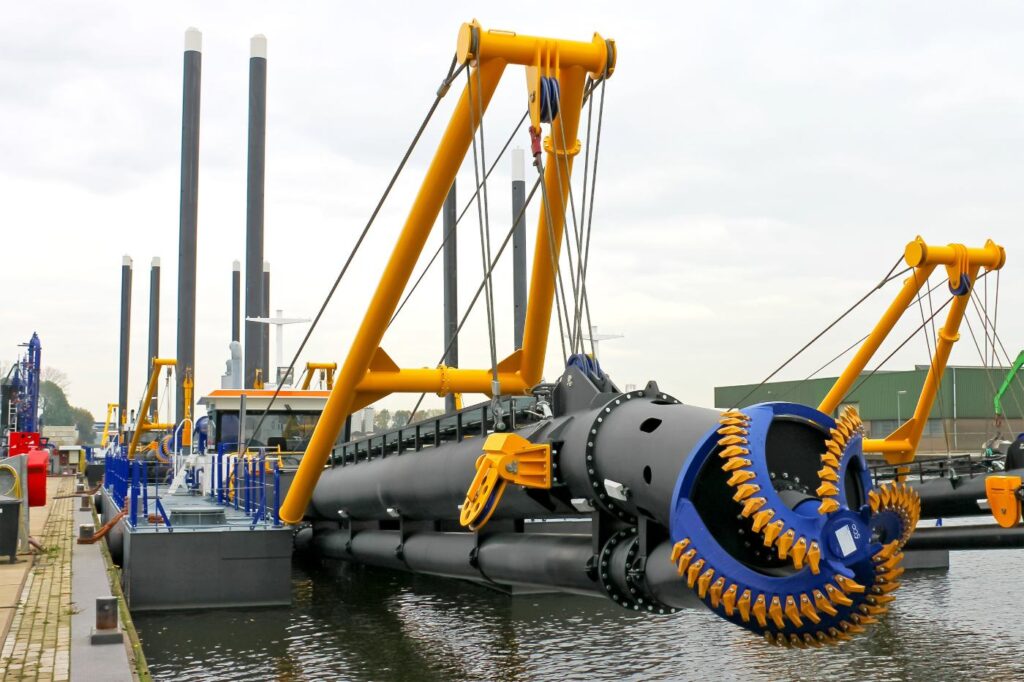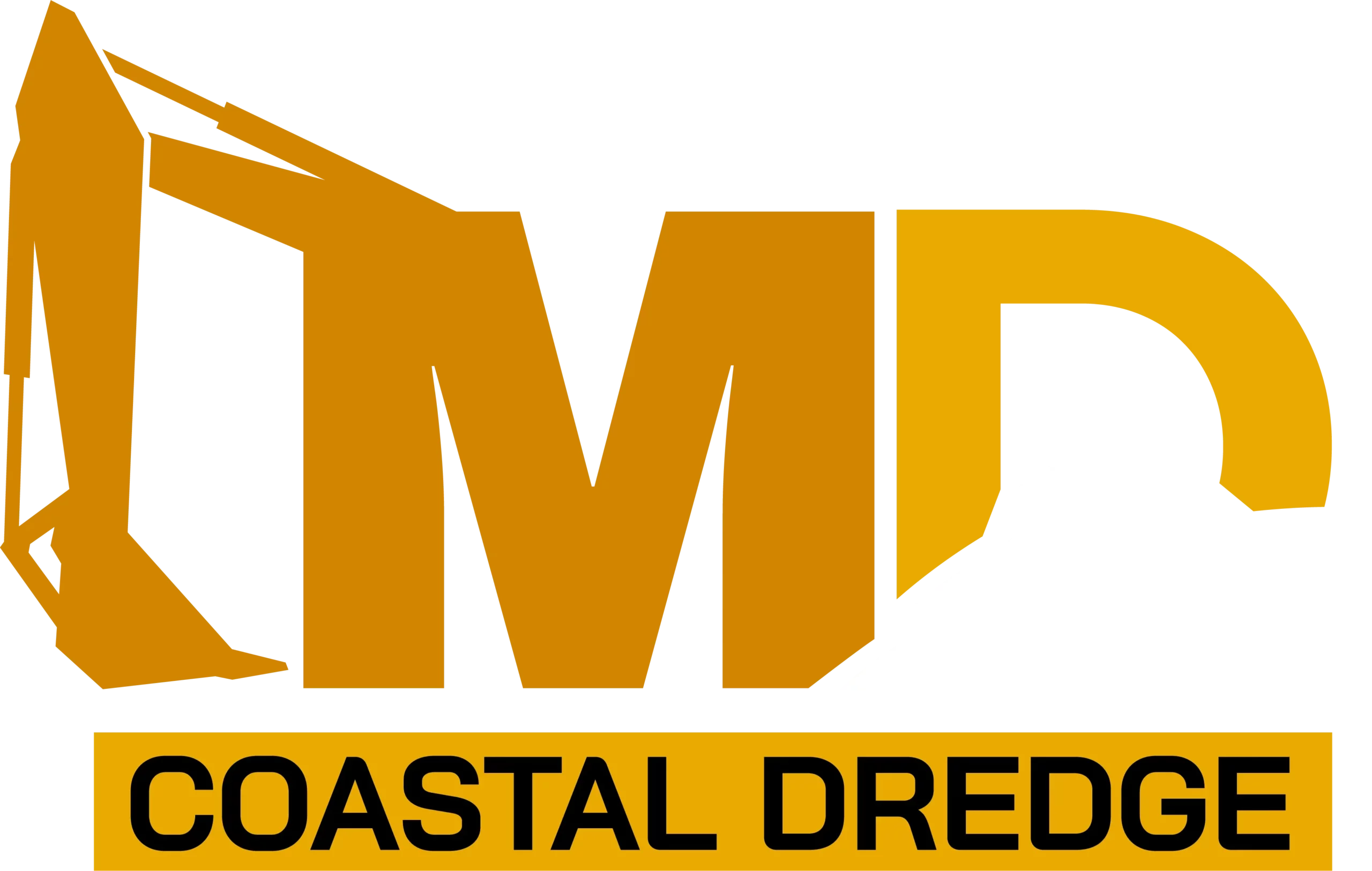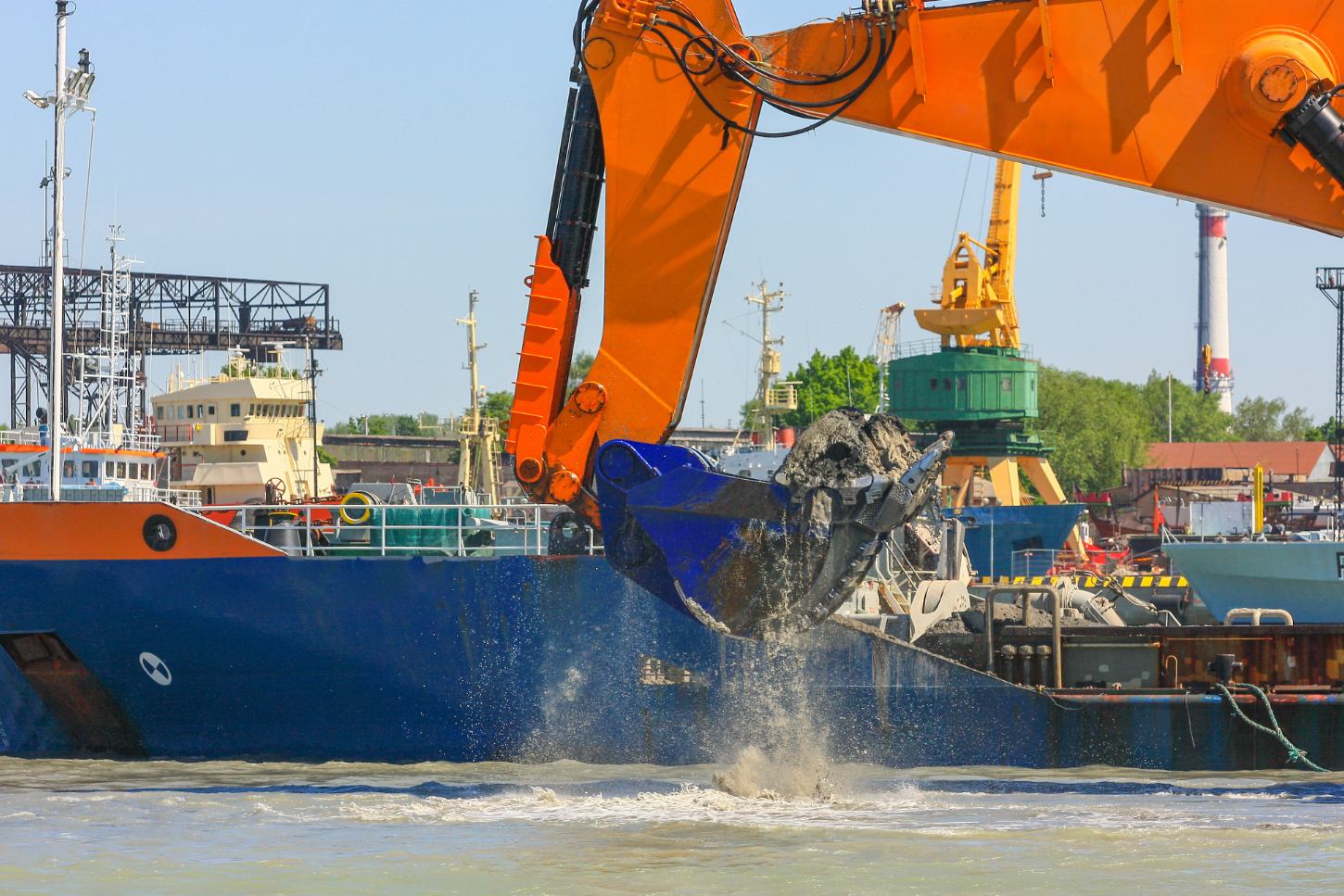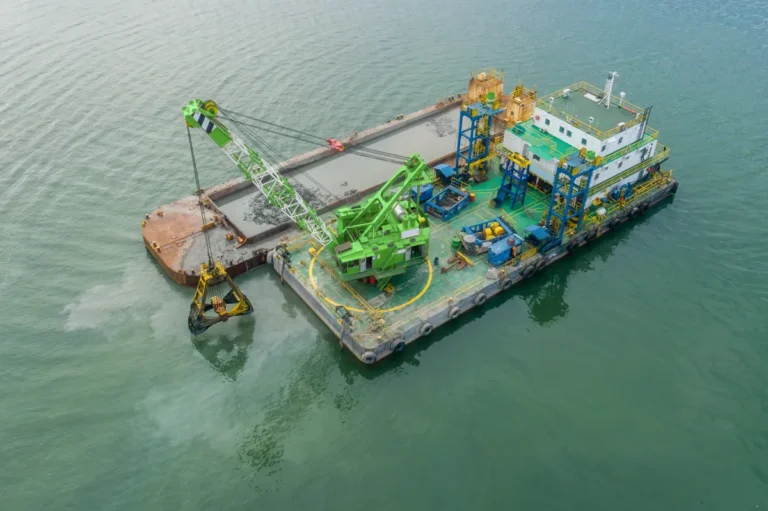Dredging has long been a cornerstone of marine and inland waterway management, but today’s challenges—from rising sedimentation rates to stricter environmental regulations—demand more than traditional solutions. Enter modern dredging equipment, designed to deliver superior performance, adaptability, and ecological responsibility across a wide range of applications. Whether it’s deepening ports, restoring lakes, or protecting coastlines, the latest dredge equipment incorporates advanced automation, modular designs, and eco-friendly features that are transforming how projects are executed. In this article, we explore how these innovations are reshaping marine and lake dredging equipment operations, delivering tangible benefits in efficiency, safety, and sustainability.
Understanding the Role of Dredging Equipment
What Is Dredging Equipment?
Dredging equipment refers to specialized machinery used to excavate, remove, or relocate sediment, debris, and other materials from the bottom of water bodies such as rivers, lakes, harbors, and coastal areas. This type of equipment plays a critical role in maintaining the depth and navigability of waterways, reclaiming land, and restoring aquatic ecosystems.
At its core, dredging equipment operates by using mechanical or hydraulic power to extract material from underwater surfaces. The extracted material—often a mixture of silt, sand, gravel, or sludge—is then transported via pipelines, barges, or hoppers to designated disposal or reuse sites. Whether deployed in marine harbors or inland lakes, dredge equipment ensures that sedimentation and environmental buildup do not obstruct navigation or degrade water quality.
Modern dredging equipment has advanced significantly from early manual and bucket-based systems. Today’s machines incorporate high-efficiency pumps, real-time monitoring systems, and environmentally sensitive designs that minimize turbidity and protect aquatic habitats.
Types of Dredging Equipment
There are several major types of dredging equipment, each suited for different applications and environments. Choosing the right equipment depends on factors like sediment type, water depth, location, and project goals.
1. Mechanical Dredges
Mechanical dredges use buckets or clamshells to scoop material from the seabed or lakebed physically. They are typically mounted on barges and are well-suited for compacted or heavy materials.
- Examples: Clamshell dredgers, backhoe dredgers.
- Best Use: Port maintenance, bridge foundations, small-scale inland work.
2. Hydraulic Dredges
Hydraulic dredges use high-powered pumps to suck up sediment in slurry form and discharge it through pipelines. These are among the most versatile and widely used dredge equipment types.
- Examples: Cutter suction dredges, plain suction dredges.
- Best Use: Large-scale coastal dredging, beach nourishment, reclamation.
3. Cutter Suction Dredges (CSDs)
CSDs feature a rotating cutter head at the intake to break up compacted material before pumping. These are ideal for operations that involve hard soils or require precision.
- Best Use: Harbor expansion, river channel deepening, reclamation projects.
4. Auger Dredges
Auger dredges are a subset of hydraulic dredges equipped with a horizontal rotating auger at the suction inlet. They’re especially effective in shallow and narrow bodies of water where precision and low turbidity are critical.
- Best Use: Sludge removal, lake dredging equipment tasks, environmental remediation.
Each of these dredge equipment types can be customized or outfitted with additional components such as booster pumps, floating pipelines, or GPS-based automation systems to improve performance and project outcomes.
Common Applications of Dredging Equipment

Dredging equipment is vital across a wide range of marine and inland water applications. The versatility of modern dredge systems allows them to perform in both large-scale industrial environments and smaller, environmentally sensitive settings.
1. Harbor Deepening and Maintenance
Ports and harbors often experience sediment buildup due to tidal movements and runoff. Dredging equipment is used to maintain required depths, allowing safe passage for commercial and cargo vessels. Routine maintenance dredging helps prevent economic losses from blocked waterways and draft restrictions.
2. Shoreline Restoration and Coastal Protection
Coastal erosion threatens infrastructure, habitats, and communities. Dredge equipment is used to replenish eroded beaches, stabilize shorelines, and construct breakwaters or levees. Hydraulic dredges, especially cutter suction models, are commonly used for beach nourishment projects.
3. Sediment Removal from Lakes and Reservoirs
Inland water bodies accumulate sediment from natural erosion and human activity. Over time, this sediment reduces storage capacity and water quality. Lake dredging equipment, such as auger dredges, is ideal for restoring reservoirs, drinking water sources, and recreational lakes without disturbing aquatic life.
4. Land Reclamation
Countries and municipalities use dredging equipment to create new land by filling designated areas with dredged materials. This is a popular practice in urban development and coastal expansion, especially in land-scarce regions.
5. Flood Control and Stormwater Management
Dredging plays a preventive role in flood-prone regions by increasing the depth and capacity of drainage canals, retention ponds, and rivers. Removing accumulated sediment ensures efficient stormwater flow and reduces the risk of overflow during heavy rainfall.
In all these applications, the use of efficient and advanced dredging equipment ensures long-term reliability, minimizes environmental impact, and meets modern regulatory standards. From major maritime ports to inland municipal lakes, tailored dredge equipment configurations are essential for sustainable and cost-effective waterway management.
Key Technological Innovations in Modern Dredging Equipment
As waterway infrastructure demands evolve and environmental regulations tighten, manufacturers have responded with significant advancements in dredging equipment. From enhanced automation to sustainable design principles, modern dredge equipment is redefining performance standards in both marine and inland projects, including those requiring lake dredging equipment.

Automation and Remote Monitoring
One of the most impactful changes in recent years is the integration of automation technologies and remote monitoring systems. Today’s dredging equipment is capable of operating with real-time feedback mechanisms that enhance precision, safety, and productivity.
Advanced control systems use GPS-based positioning to help operators maintain exact dredging paths. This ensures that only targeted sediments are removed while avoiding over-dredging or environmental disruption. Automation also supports consistent excavation depths, which is especially important in navigation channels and port maintenance projects.
Remote monitoring features allow project managers to oversee operations from onshore control rooms or even mobile devices. Live data on pump performance, slurry density, flow rate, and cutter head pressure enable proactive decision-making and immediate adjustments, reducing downtime and increasing efficiency across dredging operations.
These innovations are particularly valuable for inland and remote projects where human access may be limited or hazardous. When paired with lake dredging equipment, automation can reduce operator error while delivering consistent results in sediment removal and shoreline restoration.
Eco-Friendly Dredge Designs
Environmental sensitivity has become a core consideration in the design and deployment of modern dredge equipment. With a global focus on preserving aquatic ecosystems, manufacturers have developed new systems that minimize disruption while maximizing performance.
Low-turbidity dredging heads are engineered to limit sediment resuspension during operation. This is crucial for projects near coral reefs, wetlands, or protected fisheries, where disturbed sediments can lead to water quality issues and ecological imbalance.
Additionally, many next-generation dredging systems feature biodegradable hydraulic fluids and improved sealing systems that prevent leaks into the surrounding environment. These systems are essential for projects in sensitive inland areas, such as those involving lake dredging equipment, where even minimal contamination can have long-term consequences.
Another important innovation is the inclusion of emission-reducing engines and energy-efficient components. Dredging operations can be power-intensive, and shifting toward electric or hybrid power systems helps lower carbon footprints and comply with environmental regulations. Variable frequency drives (VFDs) and smart control systems also optimize energy use by adjusting power output based on sediment density and dredging depth.
By balancing high performance with environmental responsibility, eco-friendly dredge equipment is helping both public and private entities meet sustainability goals without compromising on project outcomes.
Modular and Portable Dredge Equipment
Traditional dredgers often required significant time and resources to transport, assemble, and deploy, making them less practical for short-term or remote jobs. Modern dredging equipment addresses these challenges through modularity and portability.
Modular dredge systems are designed with interchangeable components that can be quickly assembled and disassembled. This approach significantly reduces setup time and shipping complexity, enabling fast mobilization to different project sites. Portable dredge equipment is especially effective for smaller-scale projects like canal restoration, pond cleanup, or inland lake dredging operations, where access and maneuverability are often restricted.
Self-contained, trailer-mounted units are also gaining popularity for their plug-and-play convenience. These compact systems can be deployed by a minimal crew and are equipped with integrated power sources, making them ideal for use in isolated locations without access to utilities.
Portability is more than a convenience—it translates into cost savings, faster project turnaround, and the ability to tackle more diverse projects with a single fleet. Contractors and municipalities benefit from reduced logistical headaches and increased operational flexibility.
Whether clearing sediment from a reservoir or deepening an access channel, modular dredge equipment ensures that project timelines stay on track, even in challenging environments.
Advantages of Using Modern Dredging Equipment
The evolution of dredging equipment has led to substantial gains in operational performance across marine and inland waterway projects. With innovations in design, engineering, and automation, today’s dredge equipment offers measurable benefits in productivity, cost-efficiency, and safety, making it indispensable for contractors, municipalities, and environmental engineers alike.

Increased Efficiency and Productivity
One of the most immediate benefits of using modern dredging equipment is the significant increase in operational efficiency. High-capacity pumps, optimized suction heads, and powerful hydraulic systems contribute to faster material removal and higher throughput rates. This translates into shorter project durations, especially in time-sensitive scenarios such as port maintenance or emergency flood mitigation.
Precision control systems also play a major role in enhancing productivity. Automated dredge heads equipped with GPS positioning and sonar imaging allow operators to excavate with pinpoint accuracy. This precision ensures that only the necessary material is removed, reducing the volume of unwanted excavation and avoiding unnecessary disturbance of the surrounding area.
In inland applications—especially when using lake dredging equipment—this precision is even more critical. Narrow waterways, environmental sensitivities, and strict depth requirements demand equipment that can deliver accurate results without collateral impact. The ability to perform repeatable, accurate passes allows teams to maintain a consistent excavation pattern, ultimately maximizing project output while minimizing disruption.
Reduced Operational Costs
Modern dredge equipment is engineered not just for power, but also for cost-effectiveness. With rising fuel costs and increasing environmental compliance requirements, efficiency at every level of operation is more important than ever.
New-generation dredging systems often use fuel-efficient engines or hybrid electric drives that reduce overall consumption. Additionally, automated controls help optimize energy use by adjusting the dredging process in real time based on sediment density and flow conditions. This intelligent dredging approach leads to fewer wasted passes, less idle time, and more efficient fuel use per cubic yard of material removed.
Another cost-saving feature lies in the construction of the equipment itself. Manufacturers now use advanced, wear-resistant materials and specialized coatings for high-stress components such as pump casings, impellers, and suction heads. These materials extend equipment life, reduce the frequency of repairs, and lower the total cost of ownership over the lifecycle of the dredge.
This durability is particularly valuable in abrasive environments, such as projects involving gravel, sand, or sludge, whether offshore or when using lake dredging equipment in inland basins. Reducing wear not only saves on parts and labor but also prevents costly unplanned downtime.
Enhanced Safety for Operators and Environments
Safety has become a top priority in modern dredging operations, and innovations in dredging equipment design reflect this shift. Remote operation capability is now standard in many systems, allowing operators to control dredging equipment from onshore control rooms or mobile stations. This minimizes exposure to potentially hazardous conditions such as deep waters, unstable banks, or contaminated sediment zones.
Moreover, modern dredge equipment is often equipped with automated shut-off systems, motion detectors, and pressure monitoring sensors that reduce the risk of equipment damage and human error. These systems provide constant feedback on operational status and can prevent incidents like over-dredging, suction head clogging, or component failure before they occur.
Environmental safety is another key advantage. With eco-sensitive design elements such as low-turbidity cutter heads and biodegradable hydraulic fluids, today’s dredging systems are built to minimize impact on aquatic ecosystems. This is particularly important in applications involving lake dredging equipment, where protecting water quality and biodiversity is often a regulatory and ecological necessity.
By combining physical safety features with intelligent controls, modern dredging equipment helps ensure both human operators and natural environments are protected throughout the dredging process.
Impact on Marine Projects
Modern dredging equipment plays a vital role in supporting the expansion, maintenance, and protection of marine infrastructure. As global trade increases and coastal development accelerates, the demand for more efficient, precise, and environmentally responsible dredge equipment has never been higher. From port operations to offshore installations, advanced dredging technologies are transforming how marine projects are executed.
Port Maintenance and Expansion
One of the most critical applications of dredging equipment is in the maintenance and expansion of ports and harbors. Over time, sedimentation can significantly reduce water depth, hindering vessel access and compromising navigational safety. To accommodate larger cargo ships and prevent costly delays, ports rely on routine maintenance dredging to keep channels clear.
Modern dredge equipment allows for the efficient deepening and widening of navigation channels with minimal disruption to port operations. GPS-guided dredging systems enable precise excavation, ensuring optimal depth is achieved without over-excavating or damaging adjacent structures.
High-throughput hydraulic dredgers are commonly deployed to remove large volumes of silt, sand, and debris quickly, helping ports stay compliant with maritime safety regulations and maintain global shipping schedules. In heavily trafficked ports, efficiency is key—delays can lead to significant economic losses. Advanced dredging systems mitigate these risks by accelerating turnaround times for maintenance work.
Coastal Protection and Beach Nourishment
Rising sea levels and increased storm activity have made coastal erosion a growing concern for many regions. As a response, coastal protection and beach nourishment projects have become essential components of marine infrastructure planning, and dredging equipment is at the heart of these efforts.
Using advanced suction and cutter dredges, sediment from offshore borrow areas can be efficiently relocated to eroding shorelines. This sediment redistribution reinforces coastal barriers, restores recreational beaches, and protects residential and commercial properties from storm surge and flooding.
Eco-conscious designs in today’s dredge equipment help reduce turbidity and safeguard marine habitats during these operations. Some systems even come equipped with turbidity curtains and real-time monitoring to limit the spread of suspended sediments, ensuring compliance with environmental regulations.
Whether it’s replenishing dunes or constructing artificial berms, modern dredgers provide the power and precision needed for large-scale coastal resilience projects.
Offshore Infrastructure Development
As the offshore energy sector grows, particularly in wind, oil, and gas, dredging equipment has become a key enabler of infrastructure development below the surface. From laying subsea pipelines and electrical cables to preparing foundations for wind turbines and oil rigs, underwater excavation must be executed with absolute precision and control.
Modern dredge equipment used in offshore projects includes deep-water dredgers equipped with remotely operated submersible pumps, advanced telemetry, and durable components built to withstand extreme conditions. These tools are crucial for trenching, seabed leveling, and ensuring that equipment installations are stable and secure.
In addition, many offshore projects are located in environmentally sensitive zones. Here, dredging must be carefully controlled to avoid disturbing marine ecosystems or resuspending contaminated sediments. The low-turbidity, high-accuracy capabilities of modern dredgers make them ideally suited for these tasks.
While this section focuses primarily on marine environments, it’s worth noting that the modular nature of today’s dredge equipment allows many of the same technologies to be adapted for inland or lake dredging equipment use as well, demonstrating their versatility across diverse operational settings.
Revolutionizing Inland and Lake Dredging Projects
While much attention is often given to large-scale marine dredging, the impact of dredging equipment in inland and freshwater environments is equally significant. Rivers, lakes, ponds, and reservoirs are prone to sediment buildup, invasive vegetation, and ecological degradation. Thanks to advancements in lake dredging equipment and compact, modular dredge equipment, these challenges can now be addressed more effectively, sustainably, and affordably than ever before.
Sediment Removal in Lakes and Reservoirs
Over time, lakes and reservoirs naturally accumulate sediment from upstream erosion, stormwater runoff, and organic decay. This buildup reduces water storage capacity, impairs aquatic life, and diminishes water quality. In drinking water reservoirs, excessive sedimentation can also clog intakes and increase filtration costs.
Modern lake dredging equipment is specifically designed to address these challenges in confined and shallow water settings. These systems often feature low-profile suction heads, GPS-guided dredging paths, and transportable floating platforms that can access tight or sensitive areas without disturbing the shoreline.
By removing compacted sludge and fine silt, dredging equipment helps restore a lake’s original depth and volume, improving its capacity to support wildlife, recreation, and municipal water supply. This also reduces the frequency of costly dredging cycles by ensuring more thorough, precise sediment extraction in each operation.
Managing Algae and Invasive Plant Growth
Another critical role of inland dredging is the management of algae blooms and invasive aquatic vegetation. Nutrient-rich sediment and decaying organic matter at the bottom of lakes and ponds often serve as a breeding ground for harmful algal blooms and the unchecked spread of plants like water hyacinth or Eurasian watermilfoil.
Using specialized dredge equipment, operators can remove this nutrient-rich layer from the benthic zone, breaking the cycle of overgrowth and eutrophication. Unlike chemical treatments, which offer only temporary relief, sediment removal provides a more permanent solution by eliminating the underlying cause of the ecological imbalance.
Shallow-water dredgers—often categorized under lake dredging equipment—are designed for minimal turbidity and low environmental disruption. These tools allow municipalities, environmental agencies, and private landowners to safely restore ecological balance in sensitive water bodies such as golf course ponds, urban lakes, and wildlife sanctuaries.
Urban Waterway Rejuvenation
Urban canals, stormwater basins, and retention ponds are essential for managing drainage and controlling floods in metropolitan areas. However, these artificial water bodies often suffer from sedimentation, trash accumulation, and vegetation overgrowth, reducing their functionality and creating public health hazards.
By deploying compact and mobile dredging equipment, municipalities can revitalize these systems with minimal disruption to surrounding infrastructure. Urban dredging improves stormwater flow, reduces mosquito breeding zones, and enhances the visual appeal of public spaces. The improved water circulation and depth also support biodiversity and recreational use.
The portability and efficiency of modern lake dredging equipment make it an ideal solution for cities with limited budgets and tight maintenance windows. Trailer-mounted or barge-based units can be deployed quickly, operate in shallow water, and be maneuvered around bridges, culverts, and walkways with ease.
These rejuvenation projects not only restore the function of the waterways but also elevate community engagement, property value, and urban livability.
Choosing the Right Dredging Equipment for the Job
Selecting the appropriate dredging equipment is a critical factor in determining the success, efficiency, and cost-effectiveness of any dredging project. From deep-sea excavation to small inland lake restoration, different operational environments demand different equipment configurations. Understanding how to align equipment capabilities with project requirements ensures optimal performance and minimal environmental impact.
Matching Equipment to Project Type
Every dredging project varies in scope, site conditions, and material characteristics. That’s why one of the first steps in equipment selection involves assessing key project factors:
- Water Depth: Deep-sea projects require large cutter suction dredges or trailing suction hopper dredgers. In contrast, shallow water operations benefit from compact, trailer-mounted units often categorized as lake dredging equipment.
- Sediment Type: Fine silt, coarse sand, sludge, gravel, or clay each requires different suction, cutting, or agitation methods. For example, auger dredges are ideal for fine sediments, while cutter heads are necessary for compacted or rocky material.
- Material Volume: High-volume projects such as harbor expansion need heavy-duty dredge equipment with high-capacity pumps and long pipeline reach. In contrast, smaller-scale sediment removal in retention basins or ponds can be handled with more portable systems.
- Access and Location: Inland and remote areas may pose logistical constraints. In these cases, modular or easily transportable dredging equipment ensures that assembly and operation can occur without the need for extensive infrastructure or specialized transport.
Choosing equipment tailored to these conditions helps reduce operational delays, optimize fuel usage, and improve environmental outcomes.
Key Specifications to Consider
Beyond matching equipment to project conditions, evaluating technical specifications is essential for achieving operational efficiency and meeting performance goals. Some of the most important factors include:
- Pump Size and Capacity: Measured in gallons per minute (GPM) or cubic meters per hour (m³/h), this determines how much material the dredging equipment can move. Projects with tighter deadlines or larger sediment volumes require higher flow rates.
- Horsepower: Engine or motor horsepower affects cutting ability, pump performance, and overall efficiency. Heavier materials or deeper dredging applications benefit from more powerful systems.
- Discharge Distance: The farther the material must be transported, the greater the system pressure and power needed. Some dredge equipment includes booster pumps to extend the discharge range without sacrificing throughput.
- Mobility and Deployment: Trailer-mounted dredges or modular pontoons make it easier to launch equipment at constrained or remote sites, especially relevant for lake dredging equipment used in confined or shallow environments.
Operators and engineers must also consider sediment abrasiveness, required dredging depth, fuel efficiency, and automation features when selecting the right model.
Importance of Maintenance and Support
Even the most advanced dredging equipment must be supported by robust maintenance protocols and responsive technical support to ensure long-term reliability. Equipment downtime can significantly affect project timelines and costs, especially in high-stakes environments like ports, protected lakes, or flood-prone regions.
Working with a trusted OEM (original equipment manufacturer) or distributor provides access to:
- Spare Parts Availability: Fast access to wear components like impellers, seals, and suction liners prevents extended downtime.
- Technical Support and Training: Hands-on operator training, remote troubleshooting, and field service options help teams maintain peak operational performance.
- Routine Maintenance Plans: Preventative maintenance schedules based on operating hours and environmental conditions ensure your dredge equipment stays within warranty and operates safely.
These support systems are especially important in seasonal operations where lake dredging equipment must be stored and reactivated periodically. OEM-provided support helps ensure equipment performs optimally when needed most.
By considering not just performance but also the lifecycle management of your dredging equipment, you can safeguard against disruptions and extract the most value from your investment.
Conclusion
Modern dredging equipment has emerged as a game-changer for both marine and inland projects, offering solutions that are faster, cleaner, and more precise than ever before. With advancements in automation, environmental design, and equipment versatility, operators now have access to dredge equipment that meets the demands of complex waterways while minimizing impact. From large-scale port maintenance to targeted lake dredging equipment applications, today’s technologies are enabling smarter, more efficient waterway management. As industry needs continue to evolve, adopting the right equipment will be key to ensuring long-term operational success and ecological stewardship.






